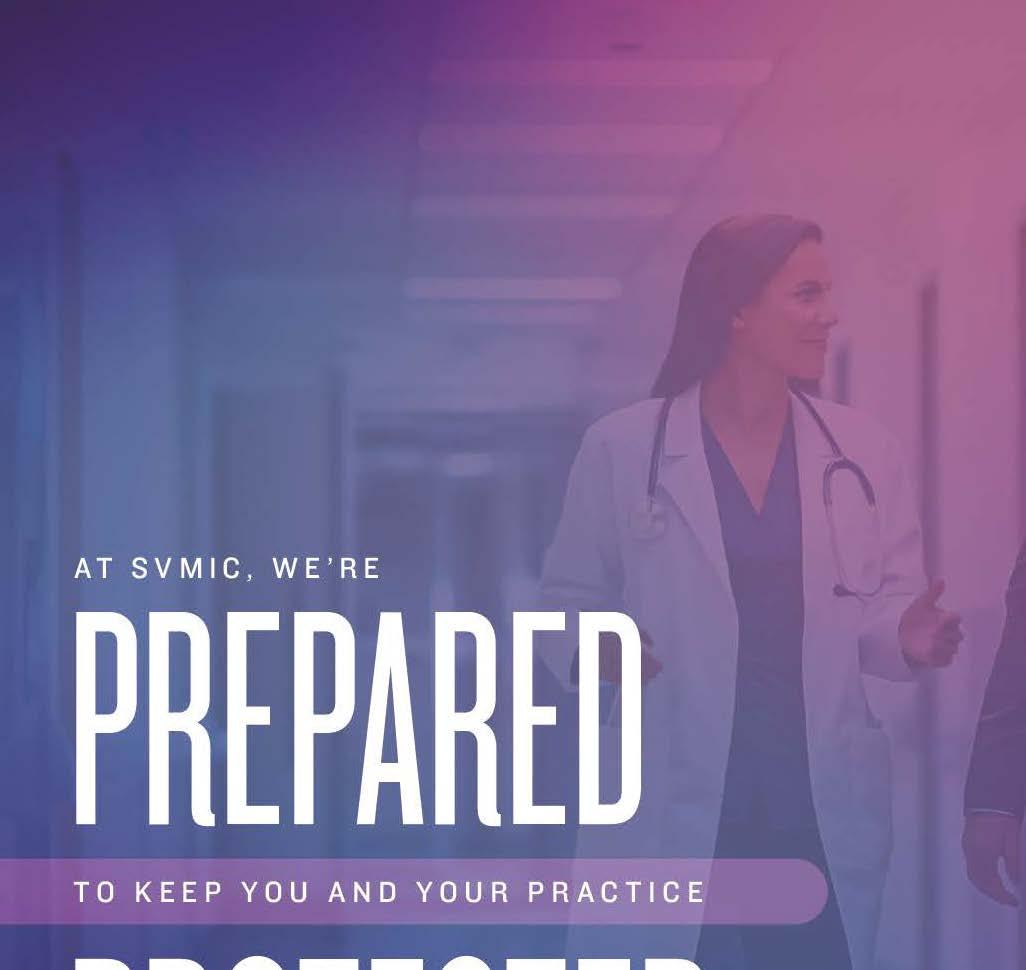











THE STATE OF IMMUNIZATIONS IN DALLAS COUNTY PLUS







EXECUTIVE
Jon R. Roth, MS,
EDITORIAL STAFF
EDITOR, PRINT & WEB CONTENT
Lauren S. Williams
DESIGNED BY Morganne Stewart
Michelle Caraballo, MD, Chair
Ravindra Mohan Bharadwaj, MD
Jawahar Jagarapu, MD
Ravina R. Linenfelser, DO
Sina Najafi, DO
Celine Nguyen, Student
Shyam Ramachandran, Student
Erin Roe, MD, MBA
Shaina Drummond, MD, President
Gates Colbert, MD, President-elect
Vijay Giridhar, MD, Secretary/Treasurer
Deborah Fuller, MD, Immediate Past President
Emma Dishner, MD, Board of Censors Chair
Neerja Bhardwaj, MD
Justin Bishop, MD
Sheila Chhutani, MD
Philip Huang, MD, MPH
Nazish Islahi, MD
Allison Liddell, MD
Riva Rahl, MD
Anil Tibrewal, MD










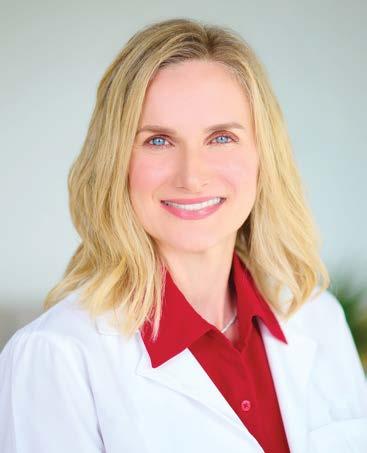
Shaina Drummond, MD
WHEN I WAS IN MY 30S, I LOST MY FATHER TO SUICIDE. It’s something I rarely talk about, not because I haven’t processed the grief, but because no one really prepares you for what it means to be a survivor of suicide, especially within your own family. As I began writing this article for DCMS, I found myself questioning whether I should share something so personal, considering the judgment that surrounds suicide. But then I considered how many of us in medicine carry silent burdens. Our training teaches us to compartmentalize our emotions and to keep pushing forward through anxiety, burnout, and depression without hesitation. We learn to associate strength with endurance, to wear resilience like armor. We were constantly told throughout our training to “be strong” no matter what the situation. In effect, we were encouraged to keep quiet and do our work. But that kind of mindset, while sometimes necessary, can also be harmful. It allows us to overlook our own warning signs. Emotional fatigue gets buried, and we continue showing up as if everything is fine, even when it’s not. If we don’t make space to care for ourselves, that silence can grow into much bigger problems, including strained relationships, unhealthy coping mechanisms, emotional burnout, or worse. Surviving a loved one’s suicide forces you to sit with difficult truths. You learn how complex pain can be, how much stigma still surrounds mental illness, and how fragile even the strongest among us can feel. You also start to listen differently, not just to others, but to yourself. Over time, I have come to understand that healing is highly personal. Everyone processes grief in their own way, and there is no standard approach that works for all. That perspective has helped me extend more grace not only to myself, but to others who are grieving in their own way. And perhaps most significantly, this loss pushed me to look inward. It made me pay closer attention to my own mental health and emotional well-being, something I hadn’t prioritized before. In medicine, we’re so used to holding it to-
gether for others that we often forget to care for ourselves. It wasn’t until I experienced deep personal loss that I realized how vital it is to care for ourselves, not just as people, but as caregivers.
Even in 2025, physician mental health continues to be a serious but often overlooked issue. Despite growing awareness, burnout, depression, and suicide remain alarmingly common among healthcare professionals. This highlights an important truth that we cannot ignore: behavioral health is essential to overall well-being, and physicians are no exception. It encompasses the prevention, diagnosis, and treatment of mental health conditions, substance use, and stress-related symptoms. Yet within the culture of medicine, these needs are too often dismissed or deprioritized. While some progress has been made to address the emotional toll of medicine, the culture of silence still runs deep. Vulnerability is often seen as weakness, and many of us are expected to carry others’ pain while minimizing our own. But we cannot keep giving if we are emotionally depleted. To care for others, we must also be willing to care for ourselves.
The good news is that the conversation around physician mental health is changing. More institutions are recognizing that wellness is not a luxury; it is a necessity. From confidential therapy services and peer support programs to mindfulness training, protected time for self-care, and flexible scheduling models, wellness resources are becoming more accessible and encouraged across healthcare systems. These efforts are a step in the right direction, but they only make a difference if we give ourselves permission to use them. Seeking help or support does not make you any less of a physician. It makes you human. In fact, it takes courage to acknowledge when you need help and strength to prioritize your own healing. Just as we advocate for our patients to seek care early and proactively, we must do the
same for ourselves. Our well-being matters not only for our own lives but also for the quality of care we provide to others.
Encouragingly, this shift in awareness is also reaching medical regulatory bodies. In partnership with the American Medical Association, the Federation of State Medical Boards (FSMB) released recommendations in 2018 to update licensing applications, focusing on current impairments rather than past mental health history, and many boards have since adopted these recommendations. In 2020, the Texas Medical Board (TMB) revised its language to focus on current impairments, aiming to reduce stigma and encourage physicians to seek help when needed without fear of jeopardizing their licensure. The current application asks:
“Are you currently suffering from any condition for which you are not being appropriately treated that impairs your judgment or that would otherwise adversely affect your ability to practice medicine in a competent, ethical, and professional manner?”
This question focuses on current conditions that may impair a physician’s ability to practice safely and effectively. It is important to note that seeking treatment for mental health conditions is not, by itself, a barrier to licensure. The TMB acknowledges that medical or mental health treatment is a normal part of many people’s lives, and receiving such treatment does not alone disqualify an applicant from licensure. Even for those who answer yes to this question, the answer is confidential. Those physicians can expect to provide more information to TMB about the nature of the impairment. The board usually refers these cases to Texas Physicians Health Program.
Mental Health Resources Available to Texas Physicians
As the importance of mental health becomes more widely acknowledged in medicine, physicians in Texas are seeing more support resources made available. The path to wellness is not something we have to navigate alone. Whether you are early in your career or have been practicing for years, confidential help and resources are within reach. Members of the Dallas County Medical Society (DCMS) have access to a range of services that offer compassionate, private support tailored to the unique pressures of physicians:
1) Dallas County Medical Society (DCMS) & the Emotional PPE Project
This program links physicians and healthcare workers with volunteer mental health professionals who offer free, confidential support—no insurance required. It gives clinicians a safe place to talk about issues like burnout, grief, and chronic stress. Programs like this remind us that tending to our own mental health is a vital part of being able to care for others.
2) Texas Physician Health Program (TXPHP)
Founded in 2009 by the Texas Legislature, TXPHP is a confidential and independent program that helps physicians and other
licensed medical professionals who are dealing with mental health concerns, substance use, or physical conditions. The program focuses on early intervention and provides treatment referrals and ongoing support to ensure physicians can continue practicing safely and effectively.
3) Texas Medical Association’s Wellness First Program
This statewide initiative offers a wide variety of tools to support physician wellness. It includes access to counseling, stress management techniques, and resources to help doctors maintain a healthy work-life balance. It is available to physicians at every stage of their careers.
4) Texas Medical Liability Trust (TMLT) Physician Wellness Program
TMLT provides physicians with practical tools and educational materials to manage stress, reduce burnout, and prioritize mental well-being. The goal is to help doctors protect their emotional health while maintaining satisfaction in their personal and professional lives.
These resources serve as a strong reminder that support is out there, and no physician should have to face mental health challenges alone. While individual programs and tools are essential, they represent just one part of the larger solution. True and lasting change requires something deeper: a shift in the culture of medicine itself. Looking ahead, the future of physician mental health depends on creating a professional environment built on transparency, compassion, and meaningful, systemic support. Wellness should not be treated as an optional add-on or a box to check. Instead, it must become a core part of how we train, support, and retain medical professionals. This includes equipping physicians not only to care for their patients but also to recognize and respond to emotional distress in themselves and their colleagues. We must work toward building workplaces where asking for help is a sign of strength rather than a source of stigma. When conversations about mental health become part of our everyday practice, we create space to reduce suffering and, in some cases, even save lives. As we strive for a more compassionate healthcare system, we must ensure that healing includes the people who provide care, not just the patients they serve. Taking care of your own well-being as a physician is not a luxury; it is essential. Whether it involves setting healthy boundaries, talking with a therapist, spending time with loved ones, or simply checking in with yourself, each small step makes a difference. And with every step, we move closer to a healthcare culture that supports and sustains those who dedicate their lives to healing others. DMJ
NEW DCMS HEADQUARTERS IN THE HEART OF UPTOWN






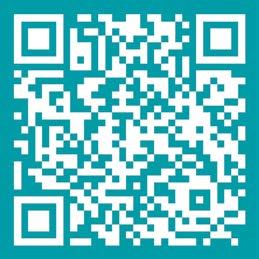










10% COURSE DISCOUNT FOR DCMS


“This program offers a challenging curriculum of leadership training and self reflection The speakers from the different sectors of healthcare were engaging and provided real examples of how our healthcare system weaves together, for better or worse. I feel more prepared as an effective leader of the teams I influence today and the teams of my future.”
Gates
Colbert, MD, FASN

The Dallas County Medical Society and the UT Dallas Alliance for Physician Leadership Program (APL) are offering a physician leadership certificate that will cover timely and important topics in today’s ever-changing healthcare environment. The certificate program covers areas of focus such as physician wellness, leadership skills, value-based contracting, quality performance, emerging IT opportunities, revenue and financial management. The program is cohort style and will adapt to industry trends and the needs/topics of interest to the physician attendees.
The DCMS/APL program includes six in-person full-day sessions, a final project session, along with interim readings, case studies, and engagement with program faculty on an ongoing basis. The program design is intended to provide meaningful and focused learning with the in-person cohort, while respecting the time demands of a physician’s schedule.
Ruby Blum, VP Policy &

Jon R. Roth, MS, CAE
AS WE OBSERVE NATIONAL CANCER RESEARCH Month this May, the medical and scientific community stands at a critical juncture. For decades, the United States has led the world in cancer research, producing breakthrough discoveries that have transformed what was once a near-certain death sentence into an array of hope and increasingly manageable diseases. This remarkable progress did not materialize by chance but through sustained, deliberate investment in our nation’s scientific infrastructure.
The designation of May as National Cancer Research Month by the American Association for Cancer Research (AACR) offers us an opportunity to recognize these achievements while confronting the stark reality that our continued progress is not guaranteed. It compels us to reflect on the systems that have enabled these advances and the current threats to this vital ecosystem.
At the heart of America’s cancer research enterprise stands the National Institutes of Health (NIH) and its dedicated cancer-focused branch, the National Cancer Institute (NCI). Since the National Cancer Act of 1971—often referred to as the beginning of the “war on cancer”—the NIH has been the primary driver of biomedical research in the United States. Its dual function as both a direct performer of research through its intramural program and as the principal funder of extramural research at universities and institutes nationwide has created a research infrastructure unparalleled globally.
The financial commitment has been substantial. In fiscal year 2023, the NIH received approximately $47.5 billion in federal funding, with the NCI specifically allocated nearly $7.3 billion. These investments have yielded remarkable returns. The overall cancer death rate has declined by approximately 32% since its peak in 1991, translating to an estimated 3.8 million cancer deaths averted. Fiveyear survival rates for many cancers have improved dramatically, with some previously deadly malignancies now considered chronic, manageable conditions.
Perhaps most importantly, federal funding has sustained the scientific pipeline that makes these advances possible. The NIH supports approximately 300,000 researchers at more than 2,500 universities and research institutions. This ecosystem nurtures the next generation of scientific talent while enabling the kind of high-risk, highreward research that private industry often cannot pursue.
Beyond Dollars: The Transformative Impact of Federal Programs
While funding figures provide a quantitative measure of commitment, it does not capture the qualitative impact of federal cancer research programs. The NIH and NCI have pioneered innovations beyond simple grant-making. Programs like the Cancer Moonshot, launched in 2016 and reinvigorated in 2022, have strategically focused resources on areas of highest potential impact while emphasizing collaboration over competition.
Similarly, the NCI’s Specialized Programs of Research Excellence (SPOREs) have accelerated the translation of laboratory discoveries into clinical applications. The NCI’s Clinical Trials Network remains the backbone of cancer treatment evaluation, allowing patients across the country—including those in rural and underserved areas—to access cutting-edge therapies that would otherwise be unavailable to them.
Despite these achievements, the cancer research community now faces significant headwinds. Following the January 2025 presidential transition, the scientific community has witnessed concerning signals about the future of federal research funding. The Trump administration’s preliminary budget proposals have indicated potential cuts to the NIH that could reach 10-15%, representing a reduction of approximately $5-7 billion.
Such cuts could have cascading effects throughout the research ecosystem. Beyond the immediate impact on laboratory operations, they could discourage young scientists from entering the field, disrupt ongoing clinical trials, and delay promising therapeutic developments. The consequences would not be limited to this fiscal year
but would compound over a generation.
Equally concerning are indications that certain research areas may face heightened scrutiny based on political rather than scientific considerations. We have all witnessed the politicization of science and threat to the peerreview process that has been the bedrock of scientific integrity and productivity since the beginning.
Beyond the human toll, reducing cancer research funding could present a ripple in the overall economic policy. Studies consistently demonstrate that investments in biomedical research generate substantial returns. A 2018 analysis found that each dollar of NIH funding generates approximately $2.60 in economic activity in the year it is disbursed. The longterm economic impact may be even more substantial when accounting for reduced healthcare costs, increased productivity, and the growth of the biotechnology sector. This is something to watch going forward.
From a human capital standpoint, the biopharmaceutical industry, which builds upon basic science discoveries funded by the NIH, supports approximately 4.7 million jobs across the United States and contributes nearly $1.3 trillion to the economy annually. This symbiotic relationship between public funding and private development has positioned the United States as the global leader in biomedical innovation.
As we observe National Cancer Research Month, physicians need to continue being one of the voices that articulates not only the scientific value of cancer research but its human impact. Behind every statistic and dollar are patients and families whose lives have been extended or saved through research advances.
We must also emphasize that cancer research transcends partisan divides. Throughout history, support for biomedical research has been one of the few areas of true bipartisan consensus in America. Both Republican and Democratic administrations have recognized its value, with some of the most significant funding increases occurring under Republican leadership.
Finally, advocacy must remain a priority. By inviting policymakers into physician clinics and research laboratories to witness firsthand the transformative work being done, we can humanize the work from these discoveries and how they convert abstract budget figures into concrete human realities.
National Cancer Research Month arrives at a pivotal moment for American science. The progress we have achieved against cancer stands as one of humanity’s great accomplishments, but this progress is neither self-sustaining nor inevitable. It requires continued investment, protection from political interference, and a renewed commitment to scientific excellence.
As the managing editor of the DMJ, I urge our readers— physicians, clinicians, researchers, and advocates alike—to use this month not only to celebrate past achievements but to advocate for the future of cancer research. The millions of Americans who will face cancer diagnoses in the coming years are counting on us to ensure that the remarkable momentum of cancer research continues unabated. Their lives may well depend on it. DMJ

Jon R. Roth, MS, CAE DCMS EVP/CEO








by Philip Huang, MD, MPH, Director, Dallas County Health and Human Services
AS OF APRIL 2025, DALLAS COUNTY, TEXAS, continues to face significant challenges in achieving and maintaining optimal immunization rates, especially among school-aged children. According to Texas Law (Texas Administrative Code, §97.61), students in Texas are required to receive specific vaccinations or have a valid vaccine exemption on file to attend school. Grade-specific vaccine requirements are detailed at: https://www.dshs.texas.gov/immunizations/school/requirements.
Texas also mandates that all public school districts and accredited private schools submit annual immunization status reports. This Annual Report of Immunization Status is a self-reported survey created by the Texas Department of State Health Services (DSHS) to measure immunization coverage among kindergarten and seventh-grade students. The full report can be found at: https://www.dshs.texas.gov/immunizations/data/ school/coverage. Tables 1 and 2 illustrate vaccine coverage rates for kindergartners and seventh graders in Dallas County during the 2023-2024 school year.
Key Findings:
• MMR vaccine coverage among kindergarteners is approximately 94.26%, slightly below the 95% herd immunity threshold recommended by the World Health Organization.
• MMR vaccine coverage among seventh graders is higher, at 98.34%, which exceeds the target threshold.
Achieving and maintaining herd immunity remains a primary concern as West Texas currently has a measles outbreak with over 600 confirmed cases and two child fatalities.
While overall county-wide coverage appears strong, it’s critical to identify and address pockets of under-vaccinated populations. Under Texas law (Texas Administrative Code §97.62) parents may request exemptions for reasons of conscience, including religious beliefs. These require a notarized DSHS affidavit, valid for two years.
A complete list of conscientious objection rates by school district is available on the Texas DSHS website (https://www.dshs.texas.gov/sites/default/files/LIDS-Immunizations/ pdf/2023-2024_K-12_Conscientious_Exemptions_by_District.pdf).
• In 2023-2024, Dallas County school district conscientious objection rates ranged from 0% to as high as 25.3%.
• Statewide, the number of exemption requests has nearly doubled since 2019, fueled by increased vaccine hesitancy, misinformation, and distrust during the COVID-19 pandemic (Table 3).
An underutilized yet vital resource is the Texas Immunization Registry (ImmTrac2), a secure database that consolidates immunization records from public and private providers, pharmacies, and schools. Although voluntary, ImmTrac2 plays a critical role in en-
suring complete vaccination records and enabling real-time data analysis.
Challenges:
•Incomplete data entry from providers.
• Gaps when individuals move across counties or states.
• Limited access to real-time data for local health authorities.
Dallas County Health and Human Services (DCHHS) urges all providers to:
• Consistently report vaccinations to ImmTrac2.
• Obtain and document required consent.
• Participate in efforts to improve data completeness and access.
DCHHS is working with DSHS to get access to real-time ImmTrac2 data so that this can be readily tracked and reported to assess the latest status regarding local vaccination activity.
In addition to the many private physicians, healthcare organizations, and community partners that offer immunizations, DCHHS provides free and low-cost vaccinations to eligible children and adults through the Texas Vaccines for Children (TVFC) and Adult Safety Net (ASN) programs. DCHHS also hosts a monthly virtual community planning meeting to coordinate county-wide im-
munization action planning efforts, including advocacy activities to support immunizations. Please let us know if you are interested in joining.
Unfortunately, recent federal funding cuts have already impacted our local efforts to sustain vital immunization efforts. It is critically important that consistent messaging about the effectiveness and safety of vaccines be fully supported from the highest levels of government to all of us at the front lines of patient care.
To protect against outbreaks and safeguard public health, Dallas County must continue:
• Sustained investment in immunization infrastructure.
• Unified messaging on vaccine safety and efficacy.
• Expansion of public education campaigns.
• Reduction of access barriers.
• Full utilization of ImmTrac2.
As vaccine-preventable diseases like measles reemerge, strengthening immunization systems is not just necessary—it is urgent. Our collective action can ensure that every child and resident in Dallas County is protected from preventable threats. DMJ
During fiscal year 2024, a total of 152,963 individuals requested an immunization exemption affidavit form for at least once vaccine requirement at Texas child-care facilities, elementary or secondary schools or institutions for higher education. This represents a 12 percent increase above fiscal year 2023.

Vaccine Coverage Rates Among Kindergartners, Dallas County, 2023-2024
Vaccine Coverage Rates Among Seventh Graders, Dallas County, 2023-2024
Additional resources on physician wellness are available on TMLT’s website, including the following:
PODCAST In TMLT’s physician wellness podcast series, hear from therapists Charlotte Howard, Ph.D. and Tori Olds, Ph.D. from the physician wellness program about physician stress and burnout; mindfulness; getting the most out of therapy; and the science behind selfcompassion. https://www.tmlt. org/resources?format=Podcasts& *=physician+wellness
WEBINAR In the “Physician wellness” webinar, Dr. Howard and Dr. Olds share insights and provide tools to support physician wellness. Also available as a CME activity.
https://www.tmlt.org/resource/ physician-wellness-webinar
CME — “Physician wellness: Mental health care is health care” is available on TMLT’s dedicated CME website, inReach. https://tmlt.inreachce.com/.
PODCAST In our podcast episode, “Stress and burnout: The silent health care epidemic,” Dr. Brian Sayers discusses causes, implications, and solutions for stress and burnout in a health care setting.
https://www.tmlt.org/podcasts/ podcast-stress-and-burnoutthe-silent-health-care-epidemic.
PRESENTATION In “What every physician needs to know: Combating physician stress and burnout,” find definitions for mental health terminology and a link to a Stanford Medicine website offering anonymous self-assessments, contact information for support groups and classes, and additional resources.
https://cdn.prod.website-files. com/6790ae6ff3e4aa35f74b 86d5/67b72cd2cfa21c661a75 ac86_combating-physicianstress-and-burnout.pdf
Reprinted with permission from Texas Medical Liability Trust (TMLT)
IN MAY 2025, TEXAS MEDICAL LIABILITY TRUST (TMLT) entered the third year of offering the Safe Harbor Physician Counseling Program to policyholders. The Safe Harbor program was created by the Travis County Medical Society to help clear roadblocks many physicians face when considering therapy. It offers a way for physicians to access counseling without the fear that their employer, practice partners, or medical board will know that they have accessed it.
TMLT covers the cost of up to four visits for policyholders and four visits for their spouse/ partner with a counselor from Safe Harbor — no matter where they live in Texas. Counselors are available for virtual or in-person visits with Austin-based participants or available for virtual visits for participants throughout the state.
CMS Wellness Program.
“We are living through a difficult time for physicians. If finding solace for just a few hours through this resource is possible, I want to make sure that TMLT does everything in its power to offer this service,” says Robert Donohoe, President and CEO of TMLT.
“I started therapy because I felt lost and frustrated at not being able to make progress towards my professional goals. Now I find that the anxiety and fear that hold me back are rooted in past experiences that I was never able to unpack. Sometimes we talk about work, other times we go way back to my youth. Talking about these parts of my life reveal patterns in my behavior. I feel like a massive transformation is taking place in my life. I am able to focus better and connect with others.”
A physician receiving counseling through the Safe Harbor Physician Counseling Program
Safe Harbor counseling sessions do not require reporting to the Texas Medical Board or to credentialing entities, as no diagnosis is made and no insurance is billed. No identifying information is shared between TMLT, the counselors, or the Travis
The program offers access to a panel of doctorate-level counselors, vetted by the Travis CMS based on their credentials and experience working with physicians. Counselors can work with physicians to address depression and anxiety; grief counseling; career difficulties; dependency and addiction; relationship issues; family conflicts and parenting; and more.
“My hope for this program is that it will provide an atmosphere or a community where we feel like family and where we feel like we can really talk about our mental health needs; where people can freely access counseling and not be ashamed of it or concerned that it’s going to be reported,” says Dr. Brian Sayers, a rheumatologist in Austin. Dr. Sayers worked with the Travis CMS to create Safe Harbor in 2017.
Visit www.tmlt.org/wellness to access the program or learn more about the counselors. DMJ

by
Jason M. Nagata, MD; Christopher D. Otmar, PhD; Joan Shim, MPH; Priyadharshini Balasubramanian, MPH; Chloe M. Cheng, MD; Elizabeth J. Li, MPH; Abubakr A. A. Al-Shoaibi, PhD; Iris Y. Shao, PhD; Kyle T. Ganson, PhD; Alexander Testa, PhD; Orsolya Kiss, PhD; Jinbo He, PhD; Fiona C. Baker, PhD
SOCIAL MEDIA USE AMONG ADOLESCENTS HAS RISEN sharply in recent years, raising concerns about its impact on mental health. 1 In 2021, 42% of adolescents reported persistent feelings of sadness or hopelessness, an increase of 50% from 2011. 2 Although correlations between social media use and depressive symptoms have been previously identified, the directionality of this relationship remains unclear. 3-9 In 2023, the US Surgeon General issued the Advisory on Social Media and Youth Mental Health, 10 calling for longitudinal research, as most prior studies have been cross-sectional and were therefore unable to determine temporality, directionality, or withinperson changes. 3-9 Disentangling whether social media use contributes to or is a reflection of preexisting distress is critical for guiding evidence-based interventions and policy decisions.
Building on these concerns, the Differential Susceptibility to Media Effects Model (DSMM) 11 provides a guiding framework for understanding the relationship between social media use and adolescent mental health. The DSMM posits that media effects are not uniform but depend on dispositional, developmental, and sociocultural factors, which in adolescence may include heightened cognitive and emotional reactivity.12,13 These sensitivities make adolescence a critical period of vulnerability during which social media exposure may have lasting implications for mental health.14 Social media use may also play a bidirectional role; it can influence future mood states while also being shaped by preexisting depressive symptoms, potentially creating reinforcing cycles of use and distress. 15 By applying the DSMM to examine within-person changes over time, 16 this study aimed to identify whether there are bidirectional associations between social media use and depressive symptoms in early adolescence. Of note, the few existing longitudinal studies on social media and mental health in adolescents have reported mixed findings, 17 and bidirectional relationships remain understudied.
To address this gap, we leveraged data from the Adolescent Brain Cognitive Development (ABCD) Study, an ongoing national prospective cohort study that tracks participants over multiple time points. 18,19 This design enabled us to explore individual trajectories and within-person variability in the association between social media use and depressive symptoms. The design also accounted for autoregressive effects and allowed us
to explore the stability of social media use and depressive symptoms over time. We hypothesized that social media use and depressive symptoms in early adolescence would exhibit bidirectional withinperson associations over time.
Study Population
In this cohort study, we conducted analyses of data from baseline to year-3 follow-up of the ABCD Study (5.1 release). The ABCD Study is the largest longitudinal study of adolescent health, brain, and cognitive development in the US. It recruited children aged 9 to 10 years from 21 sites from October 2016 October 2018 (baseline). Participants were assessed across 4 waves (baseline, year 1, year 2, and year 3), with year-3 follow-up through 2022. Specifically, the repeated assessments allowed for a clearer examination of potential directionality—whether changes in social media use preceded shifts in depressive symptoms or vice versa (Figure 1). Sample sizes varied across waves and measures due to attrition and missing data. Analyses retained all available data at each wave. The ABCD Study sample, recruitment, protocol, and measures were reported previously 20 and are further described in the eMethods in Supplement 1. Centralized institutional review board approval for the ABCD Study was received from the University of California, San Diego; written assent was obtained from the study participants, and written consent was obtained from their parents or guardians. The current study was a secondary analysis of deidentified ABCD Study and thus did not require additional approval or assent and consent. The current study followed the Strengthening the Reporting of Observational Studies in Epidemiology (STROBE) reporting guideline for cohort studies.
Social media use was defined for this analysis as time spent on social media daily and was assessed using the ABCD Youth Screen Time Survey administered each year.21 Adolescents responded to questions about the number of hours and minutes per weekday and weekend day they spent engaging with social media. The total time spent on social media was calculated as the weighted sum: [(weekday mean × 5) + (weekend mean × 2)]/7. Weighted mean social media use was reported as a continuous variable, representing the mean daily time spent (in hours).
IMPORTANCE: In 2023, the US Surgeon General issued the Advisory on Social Media and Youth Mental Health, identifying critical research gaps that preclude evidence-based guidance given that most studies of social media and mental health have been cross-sectional rather than longitudinal and have focused on young adults or older adolescents rather than on younger adolescents.
OBJECTIVE: To evaluate longitudinal associations between social media use (time spent on social media) and depressive symptoms across 4 annual waves spanning a 3-year follow-up period from late childhood to early adolescence.
DESIGN, SETTING, AND PARTICIPANTS: In this prospective cohort study using data from the Adolescent Brain Cognitive Development Study across 21 study sites from October 2016 to October 2018, children aged 9 to 10 years at baseline were assessed across 4 waves (baseline, year 1, year 2, and year 3), with year-3 follow-up through 2022. Sample sizes varied across waves and measures due to attrition and missing data. Analyses retained all available data at each wave. Data were analyzed from January 2024 to March 2025.
EXPOSURES: Self-reported time spent on social media at baseline to 3-year follow-up.
MAIN OUTCOMES AND MEASURES: Reciprocal associations between social media use and depressive symptoms (Child Behavior Checklist) at baseline and at 1, 2, and 3 years of followup were assessed using longitudinal, cross-lagged structural equation panel models. Covariates included sex, race and ethnicity, household income, and parental educational level.
RESULTS: At baseline, the sample included 11 876 participants (mean [SD] age, 9.9 [0.6] years), of whom 6196 (52.2%) were male. After adjusting for stable between-person differences and covariates, within-person increases in social media use above the person-level mean were associated with elevated depressive symptoms from year 1 to year 2 (beta, 0.07; 95% CI, 0.01-0.12; P = .01) and from year 2 to year 3 (beta, 0.09; 95% CI, 0.04-0.14; P < .001), whereas depressive symptoms were not associated with subsequent social media use at any interval. The final random-intercept cross- lagged panel model demonstrated a good fit (comparative fit index, 0.977; Tucker-Lewis index, 0.968; root mean square error of approximation, 0.031 [90% CI, 0.029-0.033]). Between-person differences in social media use were not associated with depressive symptoms (beta, −0.01; 95% CI, −0.04 to 0.02; P = .46) after accounting for demographic and family-level factors.
CONCLUSIONS AND RELEVANCE: In this cohort study of 11 876 children and adolescents, reporting higher than person-level mean social media use in years 1 and 2 after baseline was associated with greater depressive symptoms in the subsequent year. The findings suggest that clinicians should provide anticipatory guidance regarding social media use for young adolescents and their parents.
Depressive symptoms were assessed using the validated Child Behavior Checklist (CBCL) depressive problems score (from the Diagnostic and Statistical Manual of Mental Disorders–oriented scales) each year as reported by the caregiver.22 The raw score (as opposed to the t score) was chosen to capture the full distribution of symptom severity in a community-based sample and to avoid the potential loss of within-person variability over time that may occur when standardizing scores according to age- and gender-based norms. Each raw score reflects the sum of items within the depression-related subscale, with higher values indicating more severe symptoms.
Several covariates were included to account for demographic and contextual factors that may be associated with social media use or depressive symptoms, including sex (female, male), race and ethnicity (ascertained by parent or caregiver report; categories were Asian, Black, Hispanic or Latino, Native American, White, or other [no defined groups, although write-ins were allowed]), household income (<$25 000, $25 000-$49 999, $50 000-$74 999, $75 000-$99 999, $100 000-$199 999, and >$200 000), and highest parental educational level (high school or less vs college or more). The number of adverse childhood experiences,23 the parental monitoring scale,24 family conflict (conflict subscale of the Family Environment Scale25), and the study site were also included as covariates (the eMethods in Supplement 1 give further details). All covariates were chosen based on prior literature suggesting their relevance to mental health and digital media behaviors.26
To examine the reciprocal associations between social media use and depressive symptoms over 4 time points, we fit several longitudinal structural equation models.27 We first estimated a traditional cross-lagged panel model (CLPM) and then compared it with random-intercept CLPMs (RICLPMs). The RI-CLPM is an extension of the traditional CLPM that explicitly separates stable between-person differences from within-person fluctuations over time.28 By introducing latent random intercepts, the RICLPM ensures that each individual’s trait-like baseline is accounted for, allowing the cross- lagged paths to focus on how temporary (state-like) deviations in one variable are associated with subsequent deviations in another. This approach is particularly valuable when examining processes that may be confounded by persistent individual differences because it isolates the time-varying relationships within persons.16 In doing so, the RI-CLPM clarifies whether an association is driven by people who have generally high scores on both constructs and by within-person changes that unfold across measurement occasions. It also enables the estimation of autoregressive and cross-lagged parameters that reflect carryover and spillover effects independent of any overall rank-order stability between participants.
All models were estimated using maximum likelihood with robust SEs (MLR) in the lavaan package29 in R, version 4.4.2 (R Project for Statistical Computing). MLR accounts for nonnormality and provides robust SEs and a scaled test statistic. Full information maximum likelihood was used to handle missing data on the outcome measures (the eMethods in Supplement 1 provide more detail on missing data). We evaluated model fit using the comparative fit index (CFI), Tucker-Lewis index (TLI), root mean
RI for Social Media
square error of approximation (RMSEA), and standardized root mean square residual (SRMR). We relied on fit criteria indicating good to excellent model fit30 (eg, CFI >0.95, TLI >0.95, RMSEA <0.06, and SRMR <0.08). In accordance with the benchmarks of Orth et al, 31 cross- lagged effect sizes were interpreted as small (β = 0.03), medium (β = 0.07), and large (β = 0.12). Two-sided P < .05 was considered significant. Analyses were performed from January 2024 to March 2025.
Sociodemographic characteristics of the analytic sample after excluding participants with missing baseline data for age or sex assigned at birth (N = 11 876) are presented in Table 1. A total of 5680 participants (47.8%) were female, 6196 (52.2%) were male, and the mean (SD) age at baseline was 9.9 (0.6) years. In all, 709 participants (6.0%) were Asian; 2392 (20.1%), Black; 2027 (17.0%), Hispanic or Latino; 410 (3.4%), Native American; 6166 (51.9%), White; and 171 (1.4%), other race and ethnicity. Table 2 shows descriptive statistics and 0-order correlations for the untransformed social media use variables and the CBCL depression raw scores across waves; descriptive indices (mean, SD, and range) suggested an overall increase in mean daily social media use from baseline to year 3 and a modest increase in mean depressive symptom scores. To examine the reciprocal associations among social media use and depressive symptoms over time and to concurrently partition stable, between-person differences from within-person fluctuations, we estimated 3 alternative longitudinal structural equation models. Model comparisons were conducted in a sequential manner and based on standard global fit indices.30 Following Chen’s32 recommended cutoff criteria for fit indices (eg, CFI >0.95, RMSEA <0.06, change in CFI <0.01, and change in RMSEA <0.015), we evalu-
ated whether each model demonstrated good fit and whether differences in fit between nested models were meaningful. First, we estimated the traditional CLPM, which does not partition stable between-person variance and yielded a poor fit (CFI, 0.917; TLI, 0.807; RMSEA, 0.132 [90% CI, 0.127-0.137]; SRMR, 0.065).
Next, we evaluated the constrained RI-CLPM, which incorporates latent random intercepts to capture trait-like differences and imposes equality constraints on the cross-lagged paths across time. The constrained model provided markedly improved fit indices (CFI, 0.966; TLI, 0.957; RMSEA, 0.036 [90% CI, 0.034-0.038]; SRMR, 0.027). Compared with the traditional CLPM, the constrained RI-CLPM showed improved model fit (change in CFI, –0.049; change in RMSEA, 0.096). In addition, we estimated the unconstrained RI-CLPM, which allowed the cross-lagged parameters to vary freely across time. This model showed further improvement in fit (CFI, 0.977; TLI, 0.968; RMSEA, 0.031 [90% CI, 0.029-0.033]; SRMR, 0.022).
Compared with the constrained RI-CLPM, the unconstrained version improved model fit modestly (change in CFI, 0.011; change in RMSEA, −0.005). On the basis of these comparisons and given the theoretical merit of allowing time-specific associations,14 we retained the unconstrained RICLPM as our final model (eTable 1 in Supplement 1). In the unconstrained RI-CLPM, social media use and depressive symptoms were modeled across the 4 waves (baseline, year 1, year 2, and year 3), controlling for betweenperson variance and the covariates listed in the Methods.
Between-Person Association
eTable 2 in Supplement 1 displays the standardized estimates for fixed covariates of both social media use and depressive symptoms within the final model. There were no between-person associations between depressive symptoms and social media use, as evidenced by the covariance between the latent random intercepts (β, −0.01; 95% CI, −0.04 to 0.02; P = .46). This suggests that adolescents with consistently high (or low) social media
Characteristic Participants (No. (%) (n = 11,876)
Sex
Female 5,680 (47.8%)
Male 6,196 (52.2%)
Race and ethnicitya
Asian 709 (6.0%)
Black 2,392 (20.1%)
Hispanic or Latino 2,027 (17.0%)
Native American 410 (3.4%)
White 6,166 (51.9%)
Other 171 (1.4%)
Household income, $
≤24,999 1,633 (13.8%)
25,000-49,999 1,588 (13.4%)
50,000-74,999 1,498 (12.6%)
75,000-99,999 1,570 (13.2%)
100,000-199,999 3,311 (27.9%)
≥200,000 1,250 (10.5%)
Parent’s highest educational level
(17.2%)
(82.8%)
Abbreviation: ABCD, Adolescent Brain Cognitive Development.
a Reported by the parent and/or caregiver of the participant. The “other” category had no specific racial or ethnic groups defined, although write-ins were allowed.
use were not necessarily the same adolescents with consistently high (or low) depressive symptoms after accounting for demographic and familial factors and within-person estimates.
The time-varying within-person variables were modeled by estimating both autoregressive and cross-lagged paths among the residuals of the observed indicators (Figure 2 and eTable 3 in Supplement 1).
Autoregressive effect sizes were significant for both constructs. Social media use exhibited strong temporal continuity, with an autoregressive coefficient (β) of 0.21 (95% CI, 0.16-0.25; P < .001) from baseline to year 1, 0.24 (95% CI, 0.20-0.27; P < .001) from year 1 to year 2, and 0.35 (95% CI, 0.32-0.38; P < .001) from year 2 to year 3.
Depressive symptoms also showed stability, with autoregressive coefficients of 0.17 (95% CI, 0.14-0.20; P < .001) from baseline to year 1, 0.18 (95% CI, 0.14-0.21; P < .001) from year 1 to year 2, and 0.27 (95% CI, 0.24-0.31; P < .001) from year 2 to year 3. Within-wave residual covariance was modeled to assess contemporaneous associations. At year 3, the standardized residual covariance between social media use and depressive symptoms was 0.07 (95% CI, 0.03-0.10; P < .001), meaning that individuals reporting social media use higher than the person-level mean at that wave also tended to have depres-
sive symptoms higher than the person-level mean.
The cross-lagged paths, reflecting how deviations from an individual’s expected level on one variable are associated with subsequent deviations on the other, revealed no association between depressive symptoms at baseline and social media use in year 1 (β, 0.00; 95% CI, –0.01 to 0.02; P = .46) or between social media use at baseline and depressive symptoms in year 1 (β, 0.03; 95% CI, –0.02 to 0.09; P = .19). However, significant cross-lagged associations emerged in subsequent waves. Specifically, from year 1 to year 2, social media use higher than the person-level mean in year 1 was associated with greater depressive symptoms in year 2 (β, 0.07; 95% CI, 0.01-0.12; P = .01; medium effect size). This pattern continued from year 2 to year 3, in which social media use higher than the person-level mean in year 2 was positively associated with greater depressive symptoms in year 3 (β, 0.09; 95% CI, 0.04-0.14; P < .001; medium effect size). There were no cross-lagged associations between depressive symptoms and later social media use at either interval (eg, year 1 depressive symptoms and year 2 social media use: β, 0.00 [95% CI, –0.007 to 0.01]; P = .65; year 2 depressive symptoms and year 3 social media use: (β, 0.00 [95% CI, –0.003 to 0.02]; P = .18).
In this cohort study of children and adolescents aged 9 to 12 years in the US, we found that there was a longitudinal association between increases in social media use and subsequent depressive symptoms at the within-person level. These findings provide initial evidence of temporal ordering and could suggest that social media use is a potential contributing factor to adolescent depressive symptoms rather than merely a correlate or consequence of such symptoms. Our findings are consistent with prior studies that have found associations between social media use and depression.33-35 In addition, a metaanalysis of 21 cross-sectional and 5 longitudinal studies found that there was a linear dose-response association between social media use and depression, further suggesting that social media use may be a risk factor for depression.36 Only a limited number of studies have assessed bidirectional longitudinal associations between social media use and depression in adolescents, with mixed findings.37-39 One Australian study of individuals aged 10 to 17 years used the RI-CLPM to analyze data from 2013 to 2015 and found no significant cross-lagged associations between social media use and depression.38 A Dutch study of data from 2016 to 2018 (mean [SD] participant age of 13.1 [0.8] years) using the RI-CLPM found a unidirectional association between problematic social media use and decreased mental health a year later but not vice versa.39 However, that study found no longitudinal associations between social media use intensity (eg, frequency of viewing, messaging) and mental health in either direction.39 In contrast, our study found that more time spent on social media, conceptually close to the Dutch study’s measure of intensity, was associated with later depressive symptoms. Potential reasons for the differing findings could include variations in the periods (adolescent social media use has increased significantly in the past 15 years), age ranges (the analytic cohort in our study was limited to individuals aged 9 to 12 years), and country (US, Australia, and the Netherlands).
These findings can be interpreted within the context of the DSMM,11 which posits that some adolescents may be more susceptible to negative media effects due to dispositional (eg, personality, self-esteem), developmental (eg, age), and social-contextual factors (eg, family conflict). Differential susceptibilities may also explain why some social media may be beneficial for certain individuals while detrimental to others. In later waves of our study
(particularly year 3), adolescents who reported social media use higher than the person-level mean also showed depressive symptoms higher than the person- level mean in the same wave. The contemporaneous associations suggest that immediate factors (eg, negative peer social interactions, family conflict) may coincide with or amplify concurrent distress.
The present study’s findings have implications for clinical practice and health policy. When interpreting our findings within the context of the DSMM,11 interventions targeted at addressing developmental and social-contextual factors that may be associated with the negative effects of social media among adolescents could be considered. In particular, given that age is a likely developmental factor associated with these negative outcomes, early detection of and intervention for social media use are important. Furthermore, although our findings suggest that there is a unidirectional association between social media use and depression, with increases in social media use associated with depressive symptoms through subsequent years, prior research on adolescents, especially those with depressive symptoms, has shown that they can shift from maladaptive to more positive patterns of social media use when they become aware of its impact on their mood.40 Specifically, qualitative interviews with treatment-seeking adolescents with depression revealed that over time, many adjusted their social media behaviors, reducing stress-related posting, avoiding triggering content, and using social media more intentionally to connect with supportive peers.41 Interventions that promote mindful, purpose- driven social media use, such as encouraging adolescents to prioritize social connection,41 may help mitigate negative outcomes and support better mental health.
Clinicians should consider inquiring about social media use among children and adolescents, particularly those younger than the recommended age limits (the minimum age requirement for most social media platforms is 13 years), and providing anticipatory guidance as needed. Professional organizations, such as the American Academy
of Pediatrics, could refine guidelines on social media use and emphasize the importance of family media plans and intentional social media use.
The strengths and limitations of this study should be noted. Our study adds to knowledge in the field of adolescent health and communication science by examining longitudinal associations between social media use and depressive symptoms over 4 years, whereas most previous studies were cross- sectional. In addition, strengths include the analysis of a large, demographically diverse, contemporary sample of children and adolescents in the US. Limitations include the observational design of the study, leading to susceptibility to residual and unmeasured confounders despite adjustment for potential confounders, as well as reporting, recall, and social desirability bias.42
In this cohort study of participants enrolled in the ABCD Study at age 9 or 10 years, higher person-level social media use in years 1 and 2 was associated with greater depressive symptoms in years 2 and 3. These findings suggest that more time spent on social media during early adolescence may contribute to increased depressive symptoms over time. Future studies could examine whether social media use is linked to heightened depressive symptoms by examining short-term shifts in cognitive (eg, negative self- talk, social comparison, or rumination) and excitative (eg, physiological arousal or stress) states, both of which are outlined as mediators in the DSMM.11 Given that these states may fluctuate over days, weeks, or seasons, more intensive within-person designs (eg, daily diaries, ecological momentary assessment, and passive mobile sensing via smartphone) may offer a more precise understanding of these processes compared with annual assessments. Future research should also continue to examine the prospective relationships between social media and mental health outcomes as the ABCD Study cohort ages to middle and late adolescence as well as aim to examine the mechanisms underlying these associations. DMJ
a Variables 1 through 4 are hours per day and were transformed in the final analytic model because the first 2 years were reported in ordinal categories while the
Variables 6 through 11 are scores (details of scores are given in the Depressive Symptoms subsection of the Methods section and the eMethods in Supplement 1).
(0-24).
























REFERENCES
1. Jaycox LH, Murphy ER, Zehr JL, Pearson JL, Avenevoli S. Social media and suicide risk in youth. JAMA Netw Open. 2024;7(10):e2441499. doi:10.1001/jamanetworkopen.2024.41499
2. Youth Risk Behavior Surveillance System. Youth Risk Behavior Survey Data Summary & Trends Report 2013-2023. Centers for Disease Control and Prevention. August 6, 2024. Accessed March 2, 2023. https://www.cdc.gov/yrbs/ dstr/index.html
3. Schou Andreassen C, Billieux J, Griffiths MD, et al. The relationship between addictive use of social media and video games and symptoms of psychiatric disorders: a large-scale cross-sectional study. Psychol Addict Behav. 2016;30(2):252-262. doi:10.1037/adb0000160
4. Yoo HJ, Cho SC, Ha J, et al. Attention deficit hyperactivity symptoms and internet addiction. Psychiatry Clin Neurosci. 2004;58(5):487-494. doi:10.1111/j.1440-1819.2004.01290.x
5. Yen JY, Ko CH, Yen CF, Wu HY, Yang MJ. The comorbid psychiatric symptoms of internet addiction: attention deficit and hyperactivity disorder (ADHD), depression, social phobia, and hostility. J Adolesc Health. 2007;41 (1):93-98. doi:10.1016/j.jadohealth.2007.02.002
6. Lakkunarajah S, Adams K, Pan AY, Liegl M, Sadhir M. A trying time: problematic internet use (PIU) and its association with depression and anxiety during the COVID-19 pandemic. Child Adolesc Psychiatry Ment Health. 2022;16(1):49. doi:10.1186/s13034-022-00479-6
7. Buja A, Gallimberti L, Chindamo S, et al. Problematic social networking site usage and substance use by young adolescents. BMC Pediatr. 2018;18(1):367. doi:10.1186/s12887-018-1316-3
8. Mathews CL, Morrell HER, Molle JE. Video game addiction, ADHD symptomatology, and video game reinforcement. Am J Drug Alcohol Abuse. 2019;45(1):67-76. doi:10.1080/00952990.2018.1472269
9. Haug S, Castro RP, Kwon M, Filler A, Kowatsch T, Schaub MP. Smartphone use and smartphone addiction among young people in Switzerland. J Behav Addict. 4(4):299-307. doi:10.1556/2006.4.2015.037
10. Office of the US Surgeon General. Social media and youth mental health: the US Surgeon General’s Advisory. 2023. Accessed November 6, 2023. https://www.hhs.gov/sites/default/files/sgyouth-mental-health-social-media- advisory.pdf
11. Valkenburg PM, Peter J. The Differential Susceptibility to Media Effects Model. J Commun. 2013;63(2):221-243. doi:10.1111/jcom.12024
12. Fuhrmann D, Knoll LJ, Blakemore SJ. Adolescence as a sensitive period of brain development. Trends Cogn Sci. 2015;19(10):558-566. doi:10.1016/j.tics.2015.07.008
13. Sisk LM, Gee DG. Stress and adolescence: vulnerability and opportunity during a sensitive window of development. Curr Opin Psychol. 2022;44:286-292. doi:10.1016/j.copsyc.2021.10.005
14. Orben A, Przybylski AK, Blakemore SJ, Kievit RA. Windows of developmental sensitivity to social media. Nat Commun. 2022;13(1):1649. doi:10.1038/s41467-022-29296-3
15. Flannery JS, Maza MT, Kilic Z, Telzer EH. Cascading bidirectional influences of digital media use and mental health in adolescence. Adv Child Dev Behav. 2023;64:255-287. doi:10.1016/ bs.acdb.2022.10.003
16. Hamaker EL. Why researchers should think “within-person”: a paradigmatic rationale. In: Mehl MR, Conner TS, eds. Handbook of Research Methods for Studying Daily Life. Guilford Press; 2012:4361. 17. Lopes LS, Valentini JP, Monteiro TH, et al. Problematic social media use and its relationship with depression or anxiety: a systematic review. Cyberpsychol Behav Soc Netw. 2022;25(11):691-702. doi:10.1089/cyber.2021.0300
18. Curran PJ, Bauer DJ. The disaggregation of within-person and between-person effects in longitudinal models of change. Annu Rev Psychol. 2011;62:583-619. doi:10.1146/annurev. psych.093008.100356
19. Wang LP, Maxwell SE. On disaggregating between-person and within-person effects with longitudinal data using multilevel models. Psychol Methods. 2015;20(1):63-83. doi:10.1037/met0000030
20. Garavan H, Bartsch H, Conway K, et al. Recruiting the ABCD sample: design considerations and procedures. Dev Cogn Neurosci. 2018;32:16-22. doi:10.1016/j.dcn.2018.04.004
21. Bagot KS, Tomko RL, Marshall AT, et al. Youth screen use in the ABCD Study. Dev Cogn Neurosci. 2022;57: 101150. doi:10.1016/j.dcn.2022.101150
22. Achenbach TM. The Child Behavior Checklist and related instruments. In: Maruish ME, ed. The Use of Psychological Testing for Treatment Planning and Outcomes Assessment. 2nd ed. Lawrence Erlbaum Associates; 1999:429-466.
23. Nagata JM, Trompeter N, Singh G, et al. Adverse childhood experiences and early adolescent cyberbullying in the United States. J Adolesc. 2023;95(3):609-616. doi:10.1002/jad.12124
24. Karoly HC, Callahan T, Schmiege SJ, Ewing SW. Evaluating the Hispanic paradox in the context of adolescent risky sexual behavior: the role of parent monitoring. J Pediatr Psychol. 2016;41(4):429440. doi:10.1093/jpepsy/ jsv039
25. Moos RH, Moos BS. A typology of family social environments. Fam Process. 1976;15(4):357-371. doi:10.1111/j. 1545-5300.1976.00357.x
26. Odgers CL, Jensen MR. Annual research review: adolescent mental health in the digital age: facts, fears, and future directions. J Child Psychol Psychiatry. 2020;61(3):336-348. doi:10.1111/ jcpp.13190
27. Usami S. On the differences between general cross-lagged panel model and random-intercept cross-lagged panel model: interpretation of cross-lagged parameters and model choice. Struct Equ Modeling. 2021;28(3): 331-344. doi:10.1080/10705511.2020.1821690
28. Hamaker EL, Kuiper RM, Grasman RPPP. A critique of the cross-lagged panel model. Psychol Methods. 2015; 20(1):102-116. doi:10.1037/a0038889
29. Rosseel Y. Lavaan: an R package for structural equation modeling. J Stat Softw. 2012;48(2):1-36. doi:10.18637/ jss.v048.i02
30. Hu L, Bentler PM. Cutoff criteria for fit indexes in covariance structure analysis: conventional criteria versus new alternatives. Struct Equ Modeling. 1999;6(1):1-55. doi:10.1080/10705519909540118
31. Orth U, Meier LL, Bühler JL, et al. Effect size guidelines for cross-lagged effects. Psychol Methods. 2024;29(2): 421-433. doi:10.1037/met0000499
32. Chen FF. Sensitivity of goodness of fit indexes to lack of measurement invariance. Struct Equ Modeling. 2007; 14(3):464-504. doi:10.1080/10705510701301834
33. Weigle PE, Shafi RMA. Social media and youth mental health. Curr Psychiatry Rep. 2024;26(1):1-8. doi:10. 1007/s11920-023-01478-w
34. Woods HC, Scott H. #Sleepyteens: social media use in adolescence is associated with poor sleep quality, anxiety, depression and low self-esteem. J Adolesc. 2016;51:41-49. doi:10.1016/j.adolescence.2016.05.008
35. Twenge JM, Joiner TE, Rogers ML, Martin GN. Increases in depressive symptoms, suicide-related outcomes, and suicide rates among US adolescents after 2010 and links to increased new media screen time. Clin Psychol Sci. 2018;6(1):3-17. doi:10.1177/2167702617723376
36. Liu M, Kamper-DeMarco KE, Zhang J, Xiao J, Dong D, Xue P. Time spent on social media and risk of depression in adolescents: a dose-response meta-analysis. Int J Environ Res Public Health. 2022;19(9):5164. doi:10.3390/ ijerph19095164
37. Romer D, Bagdasarov Z, More E. Older versus newer media and the well-being of United States youth: results from a national longitudinal panel. J Adolesc Health. 2013;52(5):613-619. doi:10.1016/j. jadohealth.2012.11.012
38. Houghton S, Lawrence D, Hunter SC, et al. Reciprocal relationships between trajectories of depressive symptoms and screen media use during adolescence. J Youth Adolesc. 2018;47(11):24532467. doi:10.1007/ s10964-018-0901-y
39. Boer M, Stevens GWJM, Finkenauer C, de Looze ME, van den Eijnden RJJM. Social media use intensity, social media use problems, and mental health among adolescents: investigating directionality and mediating processes. Comput Human Behav. 2021;116:106645. doi:10.1016/j. chb.2020.106645
40. Radovic A, Gmelin T, Stein BD, Miller E. Depressed adolescents’ positive and negative use of social media. J Adolesc. 2017;55:5-15. doi:10.1016/j.adolescence.2016.12.002
41. Holt-Lunstad J. Social connection as a public health issue: the evidence and a systemic framework for prioritizing the “social” in social determinants of health. Annu Rev Public Health. 2022;43:193-213. doi:10.1146/ annurev-publhealth-052020-110732
42. Van de Mortel TF. Faking it: social desirability response bias in self-report research. Aust J Adv Nurs. 2008;25 (4):40-48.
The Dallas County Medical Society brought together 75 physicians and guests for an evening of networking and craft beer appreciation on April 23, thanks to the generous sponsorship of our partner, Frost Bank. The mixer at Community Beer Co. in Dallas proved to be the perfect blend of professional connection and casual conversation.
From the moment guests arrived at the popular Dallas brewery, the atmosphere buzzed with energy as colleagues reconnected, and new friendships formed over locally crafted brews. The highlight of the evening was an exclusive taproom tour that gave attendees a behind-the-scenes look at the brewing process while sampling Community Beer Co.’s signature offerings.
With 92 physicians initially RSVPing, the strong turnout of 75 attendees demonstrated the enthusiasm within our medical community for events that combine professional networking with genuine fun. Conversations flowed as easily as the beer, with physicians from various specialties sharing experiences and building the kind of meaningful connections that strengthen our entire medical community.
The collaboration between Frost Bank and DCMS continues to create valuable opportunities for our members to step away from the demands of medical practice and enjoy quality time with colleagues in a relaxed, welcoming environment. Events like these remind us that medicine is not just a profession—it’s a community.
Special thanks to Frost Bank for making this memorable evening possible and to Community Beer Co. for their warm hospitality. We look forward to more opportunities to bring our medical community together in celebration of the connections that make our work so meaningful. DMJ
















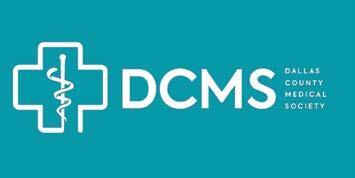


THE TEXAS MEDICAL ASSOCIATION'S ANNUAL TEXMED conference in San Antonio proved to be a standout event for Dallas-area physicians, with three exceptional doctors from the region receiving prestigious awards recognizing their contributions to organized medicine, mentorship, and advocacy. The Dallas County Medical Society was well represented among this year's honorees, demonstrating the depth of leadership talent in the region.
TexMed: A Platform for Recognition
The annual TexMed conference serves as the premier gathering for Texas physicians, providing a platform to recognize outstanding contributions to the medical profession. This year’s San Antonio event continued the tradition of celebrating excellence across the spectrum of medical practice and education.
The awards presented represent the Texas Medical Association’s commitment to recognizing leadership at every career stage, from medical school through established practice. Each award category ensures that emerging leaders receive recognition alongside their more experienced colleagues.
Building Tomorrow’s Medical Leaders
The success of these three DCMS honorees reflects a broader trend of engagement among Texas physicians in organized medicine and community advocacy. Their achievements span clinical excellence, educational leadership, legislative advocacy, and mentorship—demonstrating the multifaceted nature of modern medical leadership.
Dr. Casanova’s focus on mentorship, Le’s dedication to advocacy and policy, and Dr. Tabba’s emphasis on collective action represent different but complementary approaches to advancing the medical profession and improving patient care.
As the largest state medical society in the nation, representing more than 59,000 physician, resident, and medical student members, the Texas Medical Association continues to fulfill its mission of improving the health of all Texans—a goal made possible by dedicated individuals like these Dallas-area honorees.
The recognition of these three physicians at TexMed 2025 not only celebrates their individual achievements but also highlights Dallas as a hub for medical leadership and innovation in Texas healthcare.
MARK A. CASANOVA, MD, a Dallas palliative medicine physician and DCMS past president, was recognized with the Young Physician Section’s Young at Heart Award for his exceptional work in encouraging young physicians to pursue leadership roles in organized medicine. “Mentorship is why so many of us are involved in organized medicine, so to know I have played a part in serving as a positive role model to physician colleagues coming behind me truly means the world,” Dr. Casanova reflected upon receiving the honor. His impact extends beyond individual mentorship—Dr. Casanova previously served on the TMA
Council on Legislation and was recently elected Vice Speaker to the TMA House of Delegates, demonstrating his commitment to both local and state-level medical advocacy. He maintains active membership in the Dallas County Medical Society.
ALEXANDER LE, a medical student at Texas A&M College of Medicine at Dallas, earned the TMA Medical Student Section’s (TMA-MSS) 2025 Student of the Year award. His nomination highlighted his ability to foster a culture of advocacy among his peers and inspire classmates to join TMA committees while leading his school’s community outreach initiatives.
“I believe deeply in medicine’s potential to transform lives—not just in clinics, but through policy, equity, and public health—and I’m grateful to continue learning from and working alongside others to build a healthier, just Texas and beyond,” Le stated. His commitment to advocacy is evidenced by his service on the Dallas County Medical Society’s Legislative Affairs Steering Committee.
SUBHAN TABBA, MD, a Dallas internist, received the TMA Resident and Fellow Section’s J.T. “Lamar” McNew Award for his work promoting residents’ and fellows’ participation in advocacy efforts. His vision for leadership centers on collective action and empowerment. “My hope is to keep encouraging others to speak up, to stand up, and to understand the power we hold when we do it together,” Dr. Tabba explained. “I want to lead in a way that shows how deeply fulfilling it is to help create space for the next generation of leaders, changemakers, and advocates.” DMJ


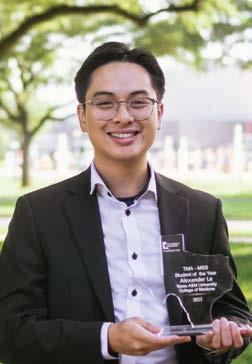





On behalf of the DCMS Foundation, we are deeply grateful for the incredible generosity of our donors. Your remarkable support fuels our mission and makes everything we do possible. Thank you for standing with us—your commitment truly makes a meaningful difference in the lives of many.
$100,000+
Donna L. Casey, MD; Lisa Casey, MD; Ms. Mary Casey & Ms. Cindy Brown
Samuel J. Chantilis, MD
Richard W. Snyder, MD & Shelley A. Hall, MD
$50,000-$99,000
Donna L. Casey, MD & Gary L. Weinstein, MD
DCMS Alliance Foundation 'Beyond Duty' Gala
The Steven R. Hays, MD and Suzanne I. Ahn, MD Legacy Gift
$15,000-$49,000
Baylor Scott & White Health
Hoblitzelle Foundation
Methodist Health System
A. Joe Saad, MD and Rana D. Saad, PhD
Southwestern Medical Foundation
Roy & Christine Sturgis Charitable Trust, Bank of America, N.A., Trustee
Texas Health Resources Dallas
$10,100-$14,999
H. Gordon Green, MD
(in memory of Drs. James Black, James Homan, & AJ Gill)
Dr. Beth & Mr. Mick Kassanoff-Piper, MD
$5,100 - $10,000
Anesthesia Partners of Dallas, PLLC
Dr. Jack Bankhead
(In memory of Dr. AJ Gill)
Mark Casanova, MD
(in honor of Dr. Robert Fine & DCMS Staff )
Carolee D. Estelle, MD
Dr. Raymond L. Fowler
Dr. & Mrs. Robert Haley
Laboratory Physicians Association
Lee Ann Pearse, MD
Mr. Jon and Ms. Liz Roth
Cynthia Sherry, MD and Dean Sherry, PhD
Lisa Swanson, MD
Ruben Velez, MD
$5,000
Dr. Jeffrey and Barbara Adelglass
Justin M. Bishop, MD
John Carlo, MD
Dr. Alex and Jeanie Chuang
Drs. Wendy M. and Andrew Chung
Dr. Maynard and Rosemarie Ewton
Robert L. Fine, MD, FACP, FAAHPM
Deborah Fuller, MD
Warren Lichliter, MD
Todd Moen, MD
Wendy Parnell, MD
Karl Rathjen, MD
TMA Insurance Trust
$1,000-$4,900
Robert K. Bass, MD
Sue Bornstein, MD
(in honor of Richard W. Snyder, II, MD)
James G. Brooks, Jr., MD
William Bruck, MD
Evangeline Cayton, MD
Drs. Tuoc Dao & Calvin Chan
Dr. & Mrs. Fred Ciarochi
BM Cohen Mb, Ch, B, MD
Gates Colbert, MD
Kenneth H. Cooper, MD
Cindy Lou Corpier, MD
Randall Wayne Crim, MD
Rebecca Euwer, MD
Dr. Stanley Feld
Sharon Gregorcyk, MD
Philip Huang, MD
Philip Huber, MD
County Judge Clay Lewis Jenkins
Drs. Rainer & Anita Khetan
Roger Khetan, MD
William R. Lumry, MD
Dustin Manders, MD
Mary Moren-Favrat (in memory of Tony Favrat)
Dennis E. Newton, MD
Dr. Lee and Mrs. Angelique Reagor
Richard Sachson, MD
Dr. Thomas Schlieve
Anil Kumar Tibrewal, MD
Dr. Charles and Barbara Van Duyne
Dr. Robert & Jane Viere
Dr. A. Worsham
$1,000
Cesar A. Albarracin, MD
American Muslim Women Physicians Association
Amy S. Anderson, MD & Paul A. Neubach, MD
Anonymous
Martin Russel Berk, MD
Sita M. Boppana, MD
Albert Broders, III, MD
Drs. John Gilmore & Linda Burk
Remigio Capati, MD
Drs. Ravi and Darshna Chandrasekhara
Michael & Anne Darrouzet
Joy Lo Chen & Albert Lo Donation Fund
Dr. M. Brett Cooper & Mr. Matthew Mirizzi
Byron Cryer, MD
J. Michael Desaloms, MD
Shaina Drummond, MD
Dr. and Mrs. Robert Dyo
Dr. Paul & Macki Ellenbogen
Edwin Escobar-Vazquez, MD (in honor of DCMS Wellness Program)
Mark Fleschler, MD
Jeri Beth Foshee, MD
Danielle Ford, MD
Dr. & Mrs. John R. Foster
Murray Gordon, MD
Amit Guttigoli, MD
Dr. J. Kent & Lynn Hamilton
Munir Hazbun, MD
H.A. Tillmann Hein, MD
Michelle M. Ho, MD
Dr. Joel and Wendy Holiner Family Philanthropic Fund of the Dallas Jewish Community Foundation
Rajeev Jain, MD
Rehana Kausar, MD
Ronald Kerr, MD
Haskell Kirkpatrick, MD
Cheryl Cox Kinney, MD (in honor of Samuel Chantilis, MD)
Kevin Klein, MD
Dr. & Mrs. Stephen Landers (in honor of Donna Casey, MD)
Ann Marilyn Leitch, MD
Benjamin C. Lee, MD & Jodi D. Jones, MD
Alexandra Dresel Lovitt, MD
Kristi McIntyre, MD
Michael S. Milner, MD
Chander and Narinder Monga, MD
Thomas Neary
Dr. Mel Platt
Matthew Pompeo, MD
Dr. R. Lynn & Cynthia A. Rea
Kim Rice, MD
Marcial Andres Oquendo Rincon, MD
Dr. Randall and Barbara Rosenblatt
Karen Roush, MD
Dr. L. Keith and Lori K. Routh
Thomas K. Russell, MD
Ann Heard-Sakhaee and Khashayar
Sakhaee, MD
Terilyn Scott-Winful, MD
Linda and Les Secrest, MD
William Shutze, MD
The Physicians of Health Central Women's Care
Albert Tesoriero, MD
Dr. George and Carolyn Toledo
Christopher Vesy, MD
Bruce Wall, MD
Drs. Brad & Rebecca Weprin
Dr. Barry & Shana Wilcox Donor Advised Fund at Schwab Charitable
Elizabeth Wilder, MD
David Winter, MD
Megan M. Wood, MD (in memory of Dr. Alison Laidley)
Timothy N. Zoys, MD
$500-$999
Anonymous
Katrina Bradford, MD
Sheila Chhutani, MD
Stephanie Elmore, MD
Dr. & Mrs. Alan Frankfurt (in honor of Donna Casey, MD)
Grady G. Goodwin, MD
Robert Gross, MD
Richard Joseph, MD
Charles Levin, MD
Aekta Malhotra, MD
Maranatha R. Mclean, MD
Mark Miller, MD
John D. Minna, MD
Bruce Phillips, MD
William Stevens, MD
Laurie Jayne Sutor, MD
Brent Walker, DO
Dr. & Mrs. Peter Walling
Dr. William R. & Katie Weaver
Charitable Trust
Claudia Werner, MD
$0-$499
Anna Acuna and Elevance Health
Anonymous
Jean McClintock Bratcher, MD
Paul and Jackie Campbell (in memory of Tony Favrat)
Allan Chernov, MD
Stephanie Copeland, MD
Jason Davis, MD
Emma Dishner, MD
Pat Fox Fulgham, MD - Foundation for Urology Research & Education
Robert Garrett, MD (in honor of Donna Casey, MD)
Dr. Joe & Ann Gaspari
Elliot Ginchansky, MD
Jennifer Delia Heffernan, MD
Drs. Pratik Kapadia and Nazish Islahi
Thomas Myers, Jr.
Thomas W. Newsome, MD
David E. Ostrow, MD
Archana Rao, MD
Dr. Philip and Sandy Raskin
Wyatt Easterling Rousseau, MD
Charles Rubey, MD
Cedric Spak, MD
Charles Tandy, MD
Kim Vernon, MD
Patrick H. Pownell, MD, FACS
Plastic and Reconstructive Surgery
Certified, American Board of Plastic Surgery
Dallas Office 7115 Greenville Ave. Ste. 220 (214) 368-3223
Plano Office
6020 W. Parker Road, Ste. 450 (972) 943-3223
www.pownell.com
CE Broker - Compliance with Confidence
Easily understand your specific CME requirements and compliance status, find and take renewal-ready courses, and report your course completions directly to the Texas Medical Board for a hassle-free renewal.
Benefits:
Find, complete, and report approved CME; View your forever course history; Take CME on the go with the free mobile app; Access to 24/7 support and more!
Dallas-Fort Worth Fertility Associates
Growing Family Trees Since 1999
www.dallasfertility.com
Samuel Chantilis, MD
Karen Lee, MD
Mika Thomas, MD
Ravi Gada, MD
Laura Lawrence, MD
Jennifer Shannon, MD
Monica Chung, MD
Melanie Evans, MD
Dallas: 5477 Glen Lakes Drive, Ste. 200, Dallas, TX 75231, 214-363-5965
Baylor Medical Pavilion: 3900 Junius Street, Ste. 610 Dallas, TX 75246, 214-823-2692
Medical City: 7777 Forest Lane, Ste. D–1100 Dallas, TX 75230, 214-692-4577
Southlake: 910 E. Southlake Blvd., Ste. 175 Southlake, TX 76092, 817-442-5510
Plano: 6300 W Parker Road, Ste. G26 www.cebroker.com
Dallas County Medical Society (DCMS) does not endorse or evaluate advertised products, services, or companies nor any of the claims made by advertisers. Claims made by any advertiser or by any company advertising in the Dallas Medical Journal do not constitute legal or other professional advice. You should consult your professional advisor.
TMLT - Inside front cover
Texas Health and Human Services/ Texas Health Steps – Page 2
Schifano Realty Group/Bolder Vision Group –Page 9
Southwest Diagnostic Center for Molecular Imaging – Page 26
TMA Insurance Trust - Inside back cover
SWMIC – Back cover
Leading provider of compliance-based medical waste solutions.
Still using cardboard boxes for your medical waste collection?
Let Biogenic Solutions upgrade your facility with our OSHAcompliant, mobile waste disposal containers & reusable Sharps program for DCMS members.
|
Retina Institute of Texas, PA
Vitreous and Retina Diagnosis and Surgery www.retinainstitute.com
Maurice G. Syrquin, MD
Marcus L. Allen, MD
Gregory F. Kozielec, MD
S. Robert Witherspoon, MD
3414 Oak Grove Ave. Dallas, TX 75204 | (214) 521-1153
Baylor Health Center Plaza I 400 W. Interstate 635, Ste. 320 Irving, TX 75063 | (972) 869-1242
3331 Unicorn Lake Blvd. Denton, TX 76210 | (940) 381-9100
1010 E. Interstate 20 Arlington, TX 76018 | (817) 417-7769
and Vitreous www.DrPruitt.com (817) 966-0235 | partners@dallas-cms.org www.dallas-cms.org
Robert E. Torti, MD
Santosh C. Patel, MD
Henry Choi, MD
Steven M. Reinecke, MD
Philip Lieu, MD, FASRS
1706 Preston Park Blvd., Plano, TX 75093 | (972) 599-9098
2625 Bolton Boone Drive, DeSoto, TX 75115 | (972) 283-1516
1011 N. Hwy 77, Ste. 103A Waxahachie, TX 75165 | (469) 383-3368
18640 LBJ Fwy., Ste. 101 Mesquite, TX 75150 | (214) 393-5880
10740 N. Central Expy., Ste. 100 Dallas, TX 75231 | (214) 361-6700
James R. Sackett, MD
Daniel E. Cooper, MD
Paul C. Peters Jr., MD
Andrew B. Dossett, MD
Eugene E. Curry, MD
Daniel A. Worrel, MD
Kurt J. Kitziger, MD
Andrew L. Clavenna, MD
Holt S. Cutler, MD
Mark S. Muller, MD
Todd C. Moen, MD
J. Carr Vineyard, MD
M. Michael Khair, MD
William R. Hotchkiss, MD
J. Field Scovell III, MD
Jason S. Klein, MD
Brian P. Gladnick, MD
8315 Walnut Hill Lane, Ste. 125, Dallas, TX (214) 363-6000
H. Pruitt, MD, FACS ADVERTISE YOUR PRACTICE HERE!
Bradford S. Waddell, MD
William A. Robinson, MD
Tyler R. Youngman, MD
Justin Cardenas, MD
9301 N. Central Expy., Ste. 500, Dallas, TX 75231
3800 Gaylord Pkwy., Ste. 710, Frisco, TX 75034
Phone: (214) 466-1446 Fax: (214) 953-1210

99MGMT HELPS PHYSICIAN-OWNERS ACHIEVE AUTONOMY through ongoing mastery of practice management, allowing them to focus on delivering high quality health care.

Whether a physician is leaving an employment model or another private practice group, starting up a practice right out of training, or just frustrated with the daily grind of maintaining and growing an established practice, 99MGMT’s comprehensive services are “just the right medicine.”
99MGMT services include Operations, Finance, Revenue Cycle Management, Human Resources, Recruiting, Compliance, Marketing, Information Technology, and Executive Leadership. 99MGMT also offers a co-employment model to help provide better benefits and retirement plans to physician-owners and their staff.
With 99MGMT’s healthcare management services, you keep your current office and staff. We provide oversight and support for all administrative functions. Your financials and your medical practice remain independent.
For more information and to contact a member of our 99MGMT team, please visit 99MGMT.com.
9330 LYNDON B JOHNSON FWY, SUITE 800 DALLAS, TX 75243
972.792.5700 (MAIN) 99MGMT.COM

TOUCHSTONE MEDICAL IMAGING, LLC IS A LEADING provider of diagnostic imaging services with 27 facilities in North Texas. The Touchstone philosophy is to bring together state-of-theart equipment, the most qualified radiologists, and superior customer service for the patients and physicians in the communities we serve. Since its founding in 1991, Touchstone is dedicated to providing a wide range of radiology services in a comfortable, service-oriented, outpatient environment. We work with leading radiologists to provide you with the highest quality care for the most accurate results. Our sub-specialized radiologists have additional training and experience for your individual imaging needs. Let Touchstone assist you in providing the most accurate diagnosis for your patient.
Facilities in Dallas County: Dallas Forest Lane, North Dallas, Advanced Imaging Center, Sammons Imaging Center, Junius Imaging Center, Grand Prairie, North Garland, Lewisville, Mesquite, Richardson
Facilities in DFW Metroplex: Arlington, Burleson, Denton, Flower Mound, Fort Worth Rosedale, Fort Worth Pet/CT, Southwest Fort Worth, Fossil Creek, Hurst, South Irving, Keller, Las Colinas, Mansfield, McKinney, Plano, Red Oak, Southlake


TMA Insurance Trust’s agents have been advising and guiding Texas physicians through the complexities of properly protecting their incomes with disability insurance for seventy years. We recognize the importance of maintaining your income if you can’t practice due to illness or injury – and what it means to you, your family and your future. We are uniquely positioned to build the best income protection solution for your situation.
We have advised thousands of physicians across multiple generations on the best ways to protect their incomes. This has afforded us with knowledge and experience that you can benefit from. You see, to us you are unique, but your situation is not.
Are you just starting your career, or looking to increase your disability benefits? Should I consider a group plan or an individual policy? Do I need a short term or long term plan? Should I keep my current policy or replace it? Is there a benefit to stacking multiple policies? We are planning for a family; what are my considerations? How can I protect my salary as it grows over time or when it is higher than the limits companies will underwrite? We have answers and will devise a personalized income protection strategy for your situation and budget.
As a full-service insurance agency, we work with the leading individual disability insurance companies in Texas. And we developed TMA member plans with “Own Occupation” coverage so we have the product flexibility to protect more of your income affordably. Some of these plans come with discounts and there are additional savings for TMA members. Having this breadth of products and savings affords us more opportunities to enact the best possible income protection plan for you.
Unlike other insurance agents and brokers, our advisors do not receive any sales-based commissions. This ensures that our advice and recommendations are unbiased and focused solely on meeting your needs.



